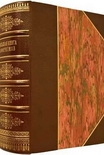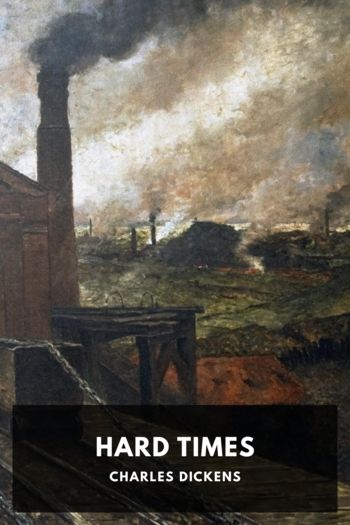Hitler's Terror Weapons Brooks, Geoffrey (bts books to read TXT) 📖

Book online «Hitler's Terror Weapons Brooks, Geoffrey (bts books to read TXT) 📖». Author Brooks, Geoffrey
Wilhelm Ohnesorge (1872-1962) had doctorates in mathematics and physics but pursued a career in telecommunications. One of his patents, the four-wire trunking switchgear, found worldwide application. During the First World War he served at the Kaiser’s General HQ as Chief of Telegraphy. At the Armistice he was 46 years of age and continued his career into diverse areas of Post Office management. An early convert to National Socialism, he was close to Hitler from the beginning of the movement and set up the first NSDAP district organization outside Bavaria, at Dortmund, in 1920. By 1929 he had become President of the Reichspost Central HQ at Berlin Tempelhof. Following the seizure of power, Ohnesorge accepted the portfolio as Secretary of State for the Post Office on 2 February 1933 and entered the Cabinet as Reichspostminister in 1937, retaining this position until the defeat.
He was a disciple of Philipp Lenard, founder of Aryan Physics, and delivered the keynote address during the physicist’s 80th birthday celebrations in 1942. 73 Ohnesorge was a reserved, diligent individual much admired by Hitler74 for his industriousness: Hitler always observed Ohnesorge’s birthday with a congratulatory telegram and often an invitation to an intimate table talk at the Reich Chancellery.
Von Ardenne-The Early Career
Baron Manfred von Ardenne (1907-1997) was the eldest of five children of an Army officer. During the First World War his father served at the War Ministry evaluating secret weapons. Shortly after leaving university Manfred von Ardenne served an apprenticeship in a radio workshop laboratory. By 1924, when his first book Rundfunk was published, he had already acquired a small income from technical treatises, royalties and patents. While specializing in the investigation of High Frequency circuitry problems at a laboratory in his parents’ house, he spent four semesters at the University of Berlin studying the principles of physics, chemistry and mathematics. Because this was the only formal training he had had in Physics, during the war the professorial team labelled him The Dilettante - ‘The Amateur’. He was often invited to speak publicly about his radio experimental work and even made broadcasts on technical subjects. In 1926 he developed the simple triple-valve receiver which sold several million units and led to the purchase price of domestic wireless sets in Germany being cut by two-thirds.
By January 1928 von Ardenne was employing a number of scientific assistants and, because of the expansion of his activities, he rented a large house at Jungfernstieg 19 in the Berlin suburb of Lichterfelde Ost. The dwelling stood in 5,000 square metres of land. A Post Office contract for the production of measuring instruments enabled von Ardenne to purchase the property in 1930. He had met Ohnesorge for the first time at the Berlin Technical University in 1930. The occasion was a public meeting chaired by the Commissioner for the Reich Radio Service examining von Ardenne’s far-reaching proposals to install a chain of radio relay stations across the country aimed at overcoming the problem of poor quality wireless reception in cities.
On Christmas Eve 1930 he demonstrated an elementary television to the Post Office and spent the next three years experimenting with the cathode ray tube. In 1933 at the Berlin Radio Exhibition Ohnesorge introduced him to Hitler with the most generous references to his early work for the Post Office. Early the following year Ohnesorge granted von Ardenne a private laboratory facility for radar research inside Post Office Central HQ and he patented a transducer on 25 February 1934. Despite pressure, he resisted becoming a Party member.
When Ohnesorge was appointed Reichspostminister in 1937 he signed a permanent contract between von Ardenne’s Lichterfelde-Ost Institute and the Research Establishment of the German Post Office for the development of radar and television, supplemented in 1940 by nuclear physics. For the three years following 1937 von Ardenne developed electron-microscopy and his work was rewarded in July 1940 when Krupps gave him a contract for their entire research programme in that field.
Early that same year von Ardenne asked Otto Hahn and Heisenberg outright for an estimate of the critical mass of uranium for a bomb and was told “a few kilos”. In these conversations, and also with Ohnesorge privately, von Ardenne had stated that he considered it technically feasible, using highly sophisticated mass separators, to obtain enough U235 for a bomb if one could get the cooperation of industry. He had in fact already designed a prototype separator based on the mass spectrograph, he said: a preliminary study had indicated that electro-magnetic techniques were probably the most efficient of all for separating the uranium isotopes. His paper Respecting a New Magnetic Isotope Separator for High Mass Transport was issued by the Reichspost Research Institute in April 1942, but ignored by the official project. When the design was examined at Oak Ridge in 1947, Physical Review recognized that von Ardenne’s design had a better ion source than the American equivalent.
Ohnesorge was enthusiastic, but when he proposed the atom bomb to Hitler in a short interview Hitler replied, “Das wäre ja noch schöner, daß mein Postminister die Atombombe erfunden hätte!” (That would look good, wouldn’t it, having my Minister of Posts invent the atom bomb!”) 75
Von Ardenne turned his attention to radioactive isotopes for use as tracers in the analytical fields of medicine, biochemistry and biology. He became a leading authority and his manual The Physical Principles of the Application of Radioactive or Stable Isotopes as Tracers published in 1944 was widely acclaimed. Representations he had made to Ohnesorge in December 1939 resulted in the Postmaster issuing instructions for the building of a one-million volt Van De Graaf generator (subsequently completed in 1941) at Lichterfelde-Ost, and he also received the component parts of a small 60-ton cyclotron for construction on site.
Professor Fritz Houtermans





Comments (0)